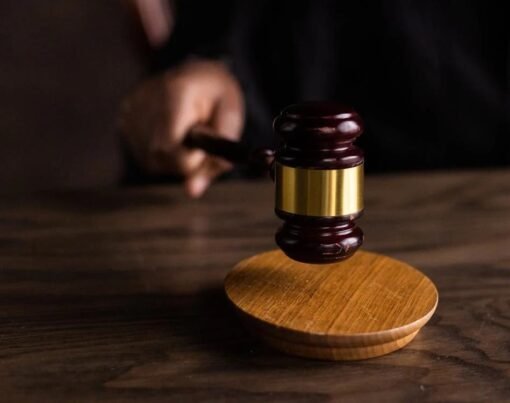Navigating the aftermath of a car accident requires a blend of composure, knowledge, and prompt action. One of the most important steps in this process is filing a car insurance claim. But before you do that, it’s essential to understand your insurance coverage so you can approach the situation wisely.
However, if you’ve failed to obtain the right car insurance, it’s important to first look for reputable brokers and find the most suitable auto insurance quotes, so you can select the best coverage for your needs. The intricacies of filing a claim post-accident can be quite complex, so working with an insurance broker and knowing every step of the process can be beneficial.
This guide delineates the procedure of filing a car insurance claim into five strategic steps, ensuring that policyholders are well-prepared to secure the coverage they merit.
Table of Contents
Safety First and Comprehensive Documentation
In the immediate wake of an accident, the foremost priority is the safety of all participants. For grave incidents, it’s imperative to contact emergency services without delay. For less severe situations, ascertain the absence of injuries and, if feasible, relocate vehicles to a secure spot, minimizing traffic disruption.
Subsequent to ensuring safety, commence the documentation:
- Photographic evidence. Employ your mobile device to capture comprehensive images of the damages, license plates, and the broader scene.
- Collecting Information. Systematically gather names, addresses, contact details, insurance specifics, and driver’s license data from all involved entities. Additionally, document the make, model, and hue of the involved vehicles.
- Eyewitness accounts. If the scene has bystanders or witnesses, their testimonies can be pivotal. Secure their contact details for potential future reference.
Cooperate with Relevant Authorities and Your Insurance Entity
In a vast majority of jurisdictions, there exists a stringent legal obligation to duly report auto mishaps to the appropriate law enforcement agencies. This becomes particularly imperative if the incident has led to physical injuries or has inflicted significant property damage.
Crafting a detailed and precise police report under such circumstances is not merely a procedural formality. Rather, it stands as a critical document that can greatly influence the trajectory of the insurance claim process.
Following the immediate resolution of the accident’s aftermath and the stabilization of the scene, it is imperative to initiate clear and timely communication with your insurance provider. In this discourse, provide a thorough and precise description of the event, ensuring that every pertinent detail is diligently recorded. Additionally, this is an ideal time to examine the nuances of your insurance policy. By understanding its intricacies, such as the deductible and coverage scope, you can establish informed expectations for the subsequent phases of the claim procedure.
Such proactive measures not only streamline the procedure but also foster a sense of clarity and confidence as you navigate the complexities of insurance claims.
Procure Repair Estimates and Deliberate on Rental Alternatives
While insurers might have affiliations with specific auto repair establishments, the prerogative of selection resides with the policyholder. Obtain a detailed repair estimate and communicate this with your insurance entity.
If the vehicle necessitates prolonged repairs and your policy encompasses rental provisions, it’s prudent to explore this avenue as it ensures minimal disruption to your daily operations.
Scrutinize and Conclude the Settlement
Following a thorough assessment conducted by the insurance adjuster, a proposed settlement will be presented for consideration. It is imperative that this proposal undergoes rigorous examination to ensure its adequacy and fairness:
Engaging in Negotiations
If the initial settlement offer does not align with the perceived value of the damages, it is both prudent and advisable to enter into detailed discussions with the insurance provider. It is not uncommon for policyholders to seek external evaluations or expert opinions to bolster their position and provide a more comprehensive understanding of the damages incurred.
Finalizing the Compensation
Once both parties mutually agree on the settlement amount, the insurance provider will proceed with the disbursement process. The method of payment, whether it involves a direct transaction to the repair service provider or a check to the policyholder, will be determined by the specific terms and conditions outlined in the insurance policy. It’s essential for policyholders to be well-acquainted with these stipulations to ensure a smooth and transparent compensation process.
Archive All Pertinent Documentation
Throughout the claim process, it’s important to retain all pertinent documentation. This includes the police report, repair evaluations, insurer correspondence, and any other important records. Such archives are indispensable, especially in the event of discrepancies or for retrospective references.
Conclusion
The act of filing a car insurance claim, while seemingly intricate, becomes paramount when considering the global context. According to the World Health Organization, every year, between 20 and 50 million people suffer non-fatal injuries due to road traffic crashes, with many incurring disabilities as a result. Such staggering numbers emphasize the importance of a structured approach to the claims process.
By emphasizing safety, meticulous documentation, policy comprehension, and sustained dialogue with the insurer, policyholders can traverse the process with confidence. It’s important to remember that the insurance entity is a collaborator in this endeavor, poised to offer guidance and support.










